Rotisserie Pork Belly: Texture Through Temperature
Ah, pork belly. We meet again. With the introduction of ThermoWorks’ RFX GATEWAY and RFX MEAT, there is finally a viable wireless probe that can be used for rotisserie cooking. OF course one of the first things we wanted to cook as soon as it became available was rotisserie pork belly. Needless to say, we were delighted when the time finally came! Here, we’ll walk you through the process to make incredible, succulent pork belly that is perfectly sliceable and tender as well as loaded up with flavor. Let’s get into it!
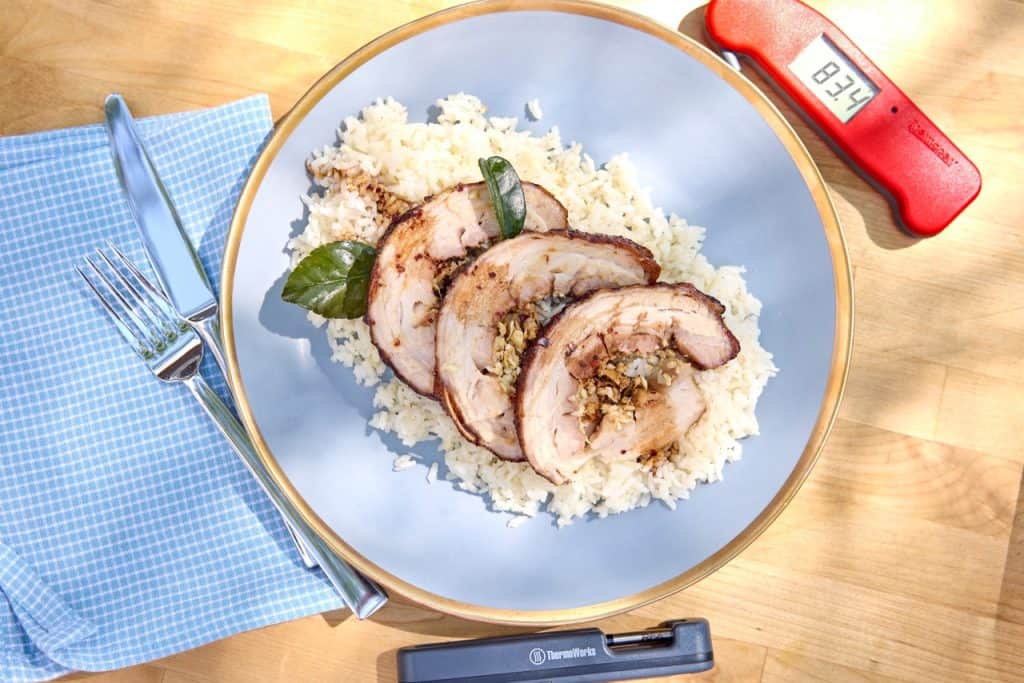
Pork belly thermal considerations
We’ve written on it before, but pork belly falls in an interesting space, protein-wise. The belly itself is not used to support the pig or to move it around much, but because of its attachment to moving and support muscles it is quite rich in collagen. And, as we know, it is also very rich in fat. The combination of high collagen meat layered together with bands of fat makes this cut one that requires particular attention to thermal principles.
Both collagen and high-fat tissues are tough and chewy, unpleasant to eat unless they are properly rendered. In the case of collagen, the rendering, which happens above 160°F (71°C)—but really gets going around 175°F (79°C)—means that the tightly wound protein fibers that make up the connective tissues unravel and break down into gelatin. The gelatin retains moisture and gives a supple, almost sticky feeling to the meat.
The fat also needs to render which involves collagen dissolution (the fat cells are bound together with collagen-like tissues as well), but it also needs for the fat itself to melt. No one wants to bite into “raw” pork fat, and it takes time at temperature for that fat to get all jiggly-jiggly.
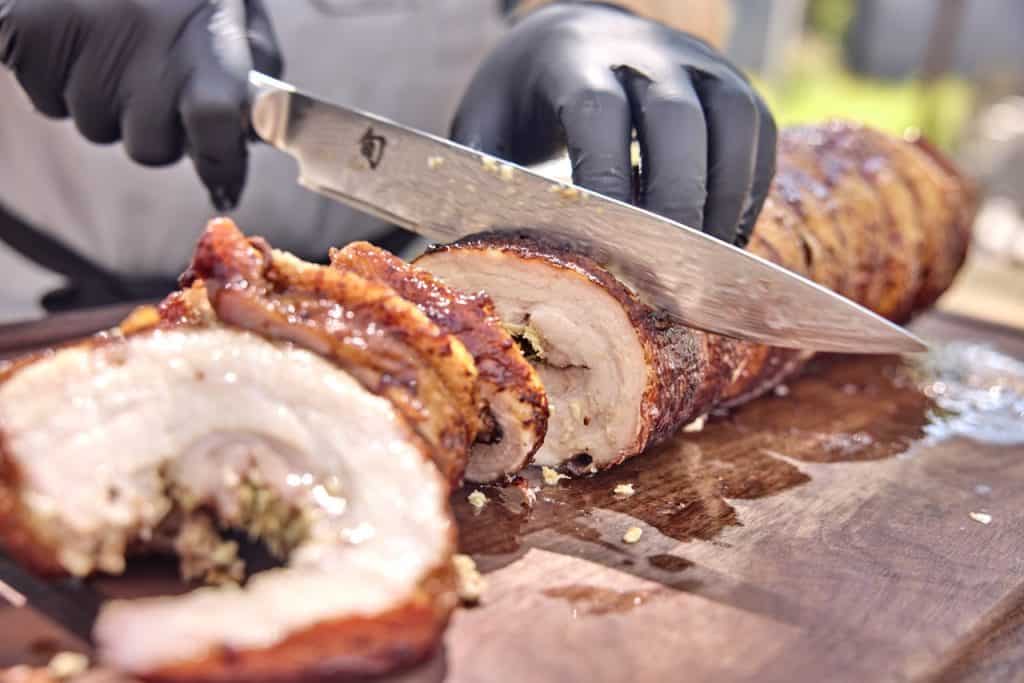
What thermometer to use
We wanted our pork belly tender, indeed, but we also wanted to be able to slice it and serve it, not for it to fall apart. This isn’t pulled pork, after all. We looked for a target internal temperature of 195°F (91°C), which is perfect for getting a tender slice. Guessing and checking just doesn’t work on a rotisserie, so we opted for real temperature control.
We already alluded to it, but RFX MEAT , in combination with RFX GATEWAY made tracking those temperatures easy with their long-range RF wireless capabilities. We set the high-temp alarm for 195°F (91°C) and watched the heat climb slowly up to melty perfection on our ThermoWorks App. We don’t need to worry about the fire getting too hot for the external part of the probe, as it can handle temps up to 1000°F (538°C), and the flames it might pass through won’t hit that.
Setting up the rotisserie
We used a Santa Maria-style grill with a rotisserie attachment to cook our pork belly, but you can use any rotisserie you like. We went for a moderately high heat, which we accomplished by adding small splits of oak to a fire that covered the length of the pork belly. It resembled, in many ways, cooking in an offset smoker. There was a need for nearly constant attention, adding wood every 10–15 minutes to maintain an even heat. If you use a rotisserie with a lid (say, a converted kettle grill) your meat will cook more quickly than ours did. The fact that ours was open to the air enhanced the on-the-heat/off-the-heat effect of the turning meat. We tried to keep the meat a few inches beyond the reach of the flames, which were not huge. There is no definitive method for this—at least not that we were able to divine. We tried to keep it at a distance and heat that it would start to sizzle as it went by the heat, but would stop sizzling by the time it gets over the “top” of the cycle.
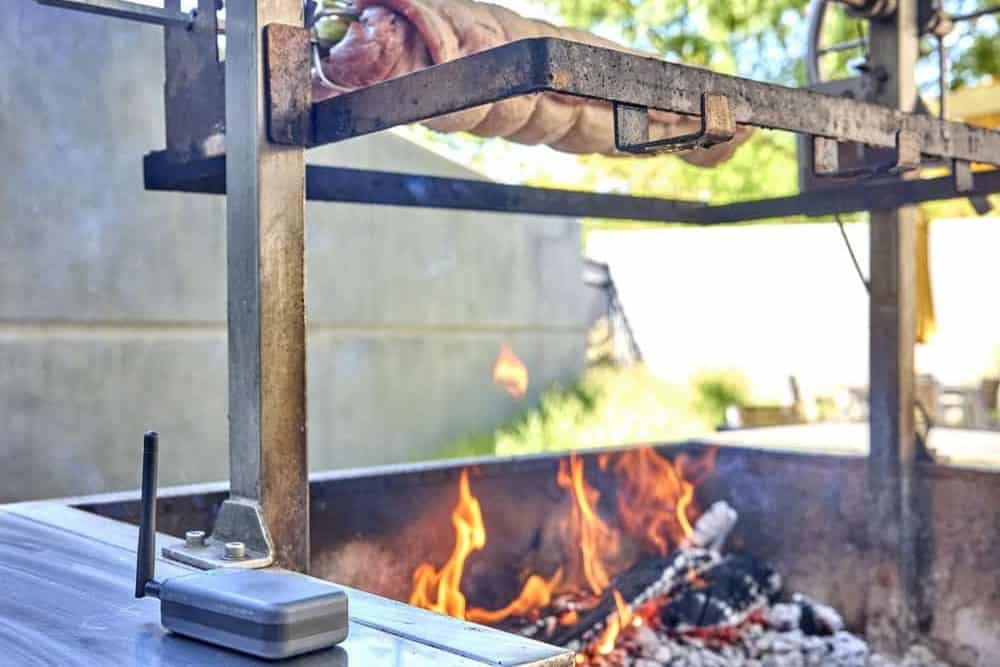
Preparing the pork
We used skinless pork belly because it is more readily available, and figured you may have the same luck finding it that we did. On the meat side, we first scored the meat deeply with a boning knife, then rubbed about eight cloves of chopped garlic into it. For salt and umami, we used chicken bullion granules and a packet of tamarind soup base, which we scored at a local Asian market in the Filipino food section. Lemon grass—bruised, lime leaf, and chopped galangal (or ginger, if you can’t find galangal at your Asian market) rounded out the seasoning.
We rolled the belly up, secured the roll with skewers, and tied the roll in place with butcher’s twine. Then we shoved the skewer through and secured the belly in place with some rotisserie forks.
We prepared an aromatic oil by gently cooking more garlic, galangal, lemongrass trimmings, and lime leaf in some neutral oil until everything got very sizzley. We strained that and painted it on the pork with a silicone brush about every 20–30 minutes as it cooked.
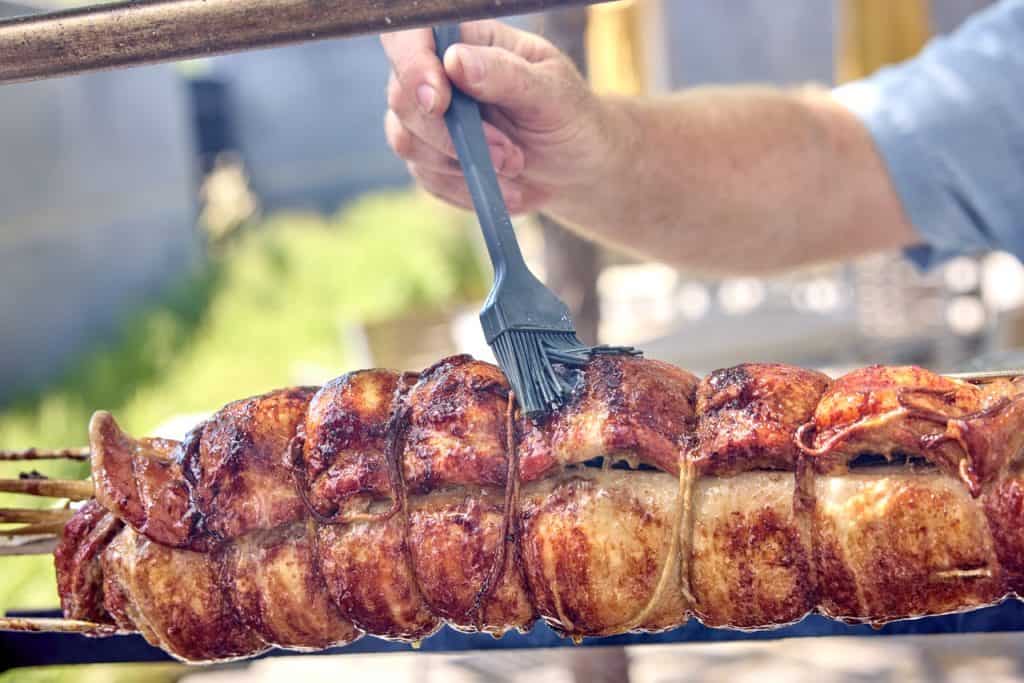
In the end, this pork belly ended up savory, tender, deliciously unctuous, and it was SO fun to cook. Yes, it’s a bit of an esoteric cook (we don’t all have rotisserie…I don’t have one at home), but if you can find a spit for cooking, this is well worth the time to make. And with RFX MEAT and RFX GATEWAY, you won’t need to stop the spin to test the temp over and over again. Give it a try. Happy cooking!
Asian Pork Belly Recipe for Rotisserie
Ingredients
- 1 whole boneless, skinless pork belly
- 3 Tbsp chicken bouillon powder
- 1 packet tamarind soup base powder
- 10 cloves garlic, chopped, divided
- 4 stalks lemongrass
- 8-10 each makrut lime leaves
- 3 Tbsp fresh galangal (or ginger) finely chopped
- 1 C Neutral oil
Instructions
Prepare the pork
- Lay the pork fat-side down on a cutting board and score the meat deeply in a cross-hatch pattern with a sharp knife.
- Sprinkle the chicken bouillon powder and the tamarind soup base all over the surface to season well.
- Rub most of the chopped garlic into the surface of the meat, pressing it down into the scored cuts. Do the same ith the galangal.
- Trim the root end and the woody leaves off of the lemongrass, then crush it with the back of a knife. Lay the lemongrass down the length of the belly with the ends sticking out beyond the edge of the pork, and sprinkle the lime leaves around on it.
- Roll the pork along its long axis, pinning it together with skewers. Tie between each skewer with butcher's twine, then remove the skewers.
- Thread the rotisserie spit through the belly roll.
- Insert RFX MEAT into the pork belly up to the recommended immersion line. Make sure it is attached to your RFX GATEWAY and open your ThermoWorks app. Set the high-temp alarm to 195°F (91°C).
Cook the pork
- Prepare your rotisserie and place the spit on the rotisserie and start cooking.
- While the pork cooks, prepare the basting oil. Put the trimmings from the lemongrass, the rest of the garlic, a few more lime leaves, and some galangal in a small pot with the oil. Bring to a gentle simmer and let it cook about 3 minutes. Strain it into a bowl.
- Cook the pork belly, basting it every 30 minutes with the oil. Keep an eye on your fire and maintain it by adding wood or coals as necessary.
- When the high-temp alarm sounds on your app, stop the rotisserie and verify the temperature with your Thermapen ONE. If you don't find any temperatures below 195°F (91°C), remove the spit from the rotisserie.
- Take the spit out of the pork, pull out the lemongrass stalks, and slice the meat.
- Serve over rice to rave reviews!
For other love poems that we’ve written to pork belly, check out these: pork belly burnt ends, porchetta, pork belly pastrami and pork belly corn fritters.


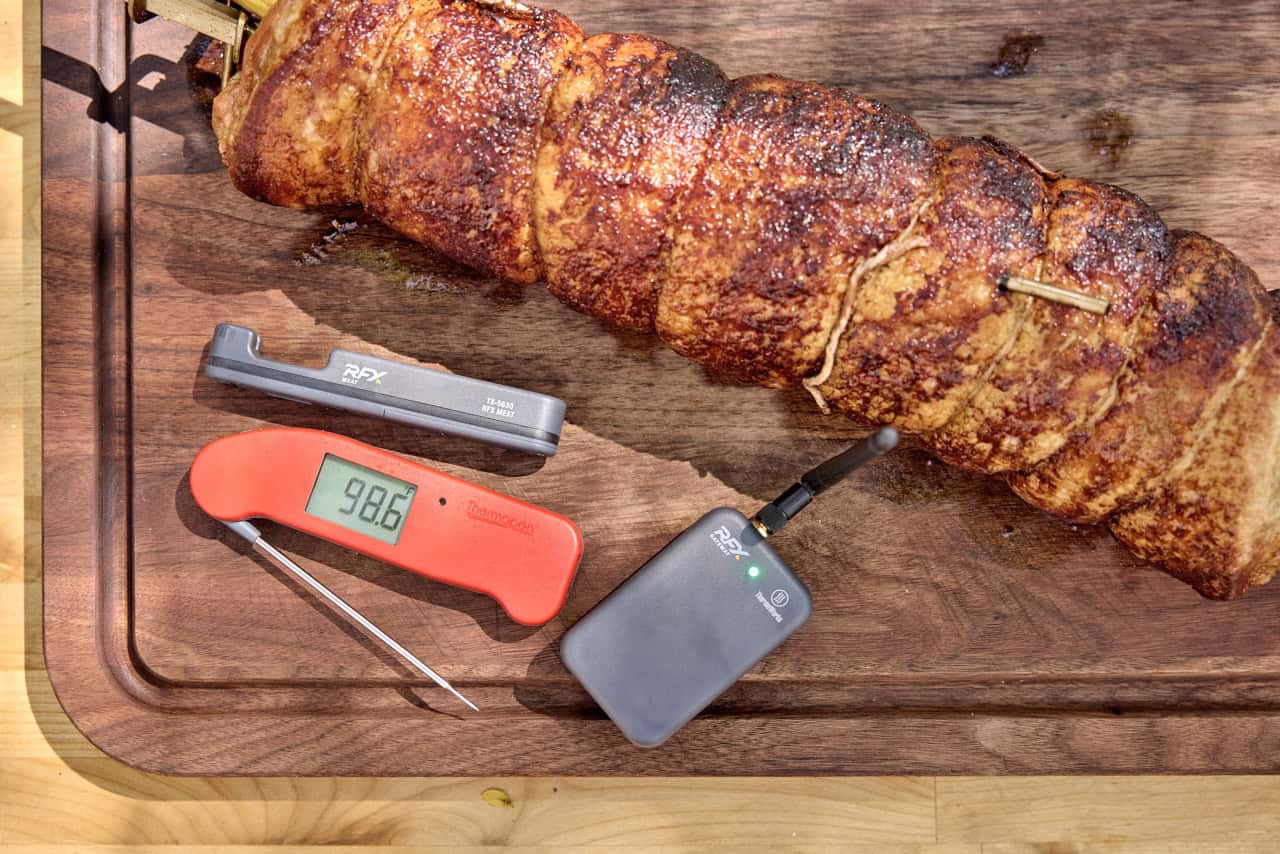
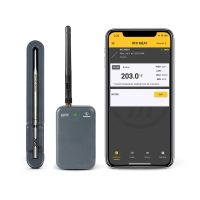
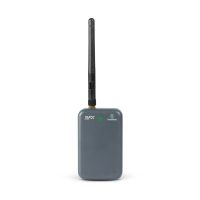
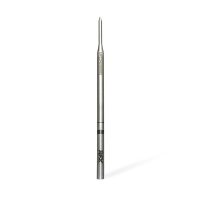
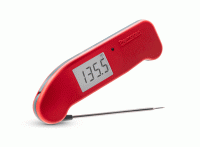
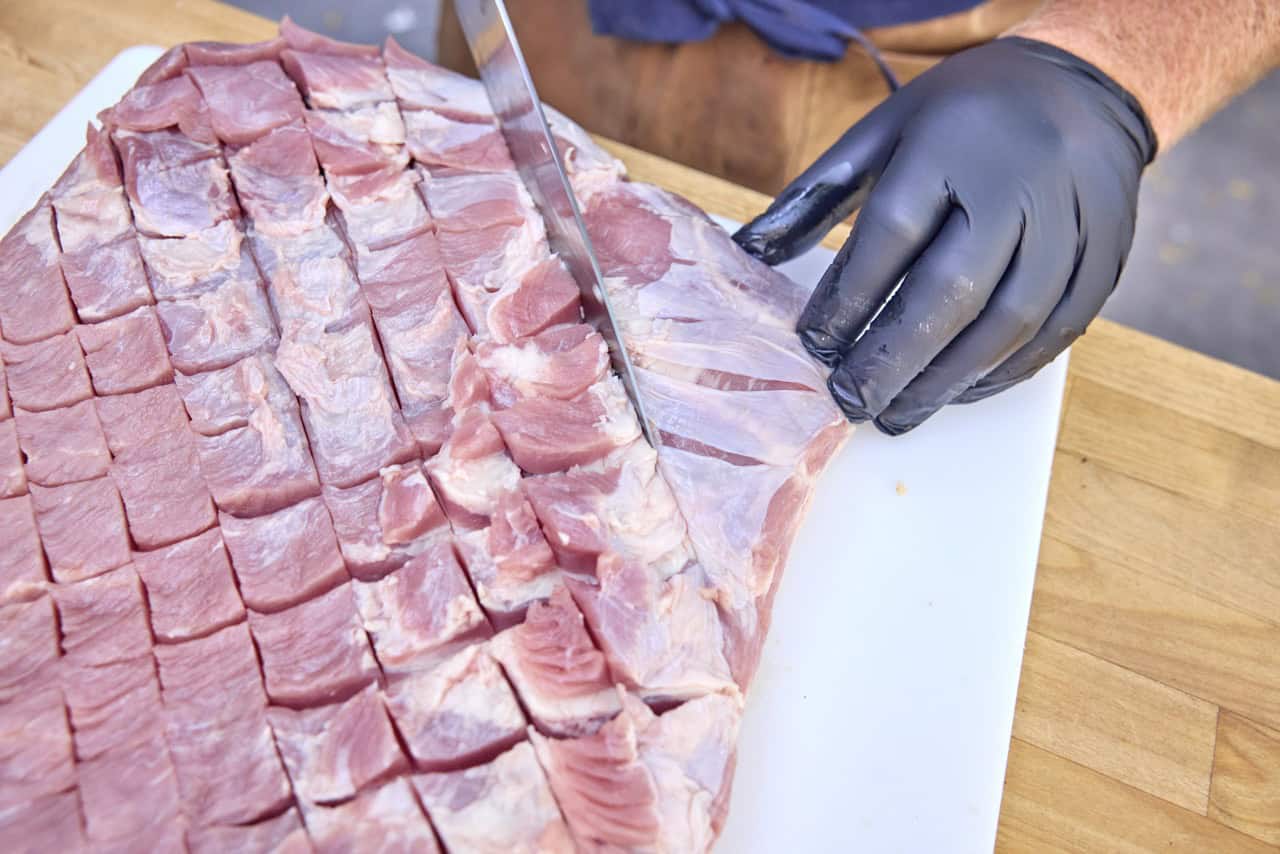
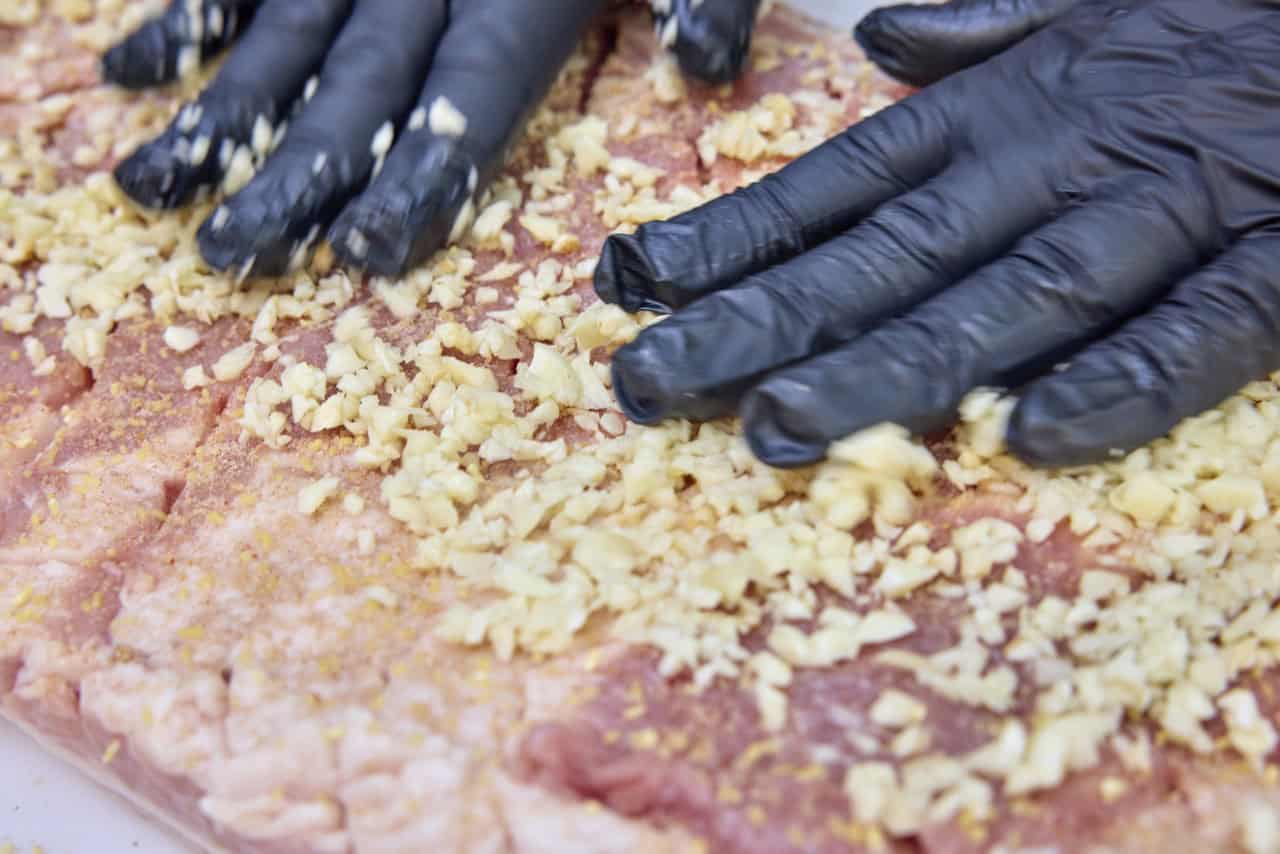
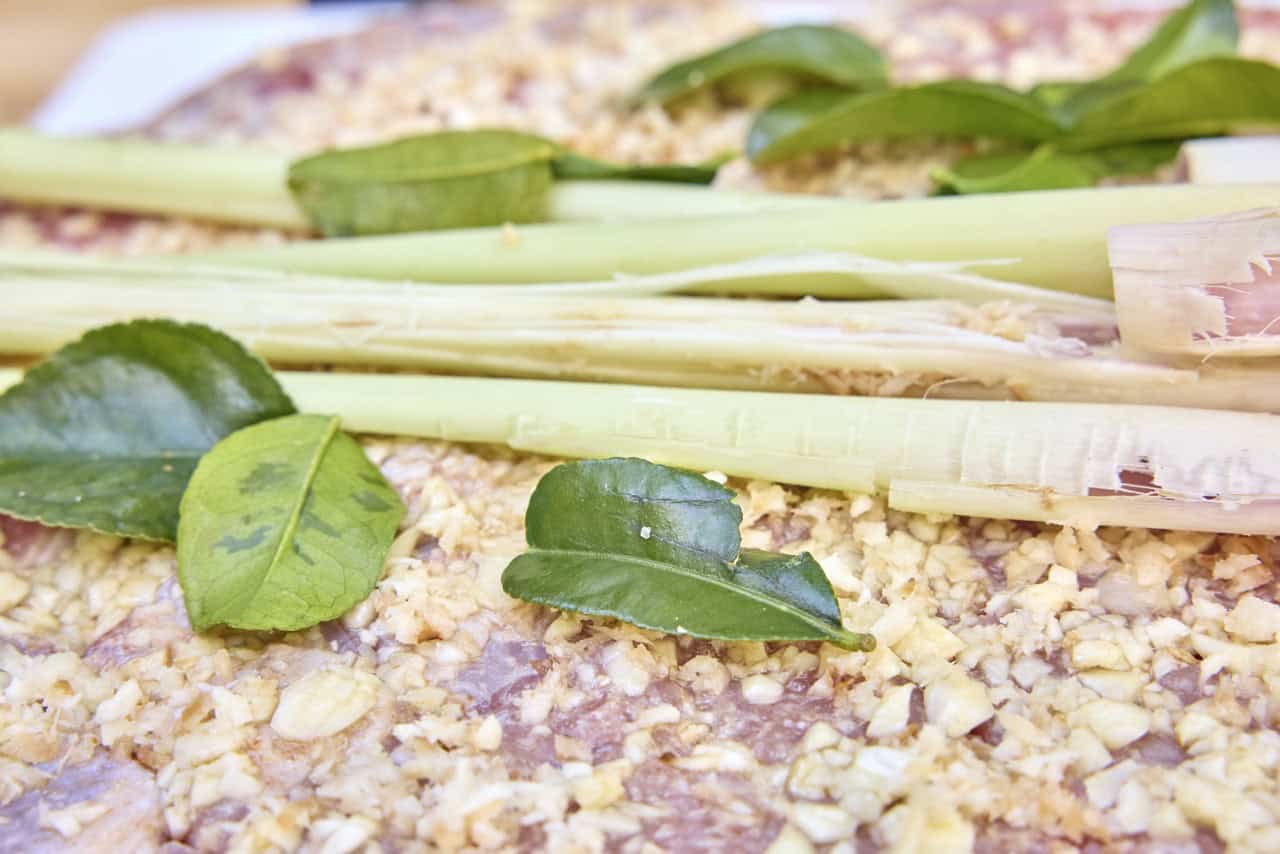
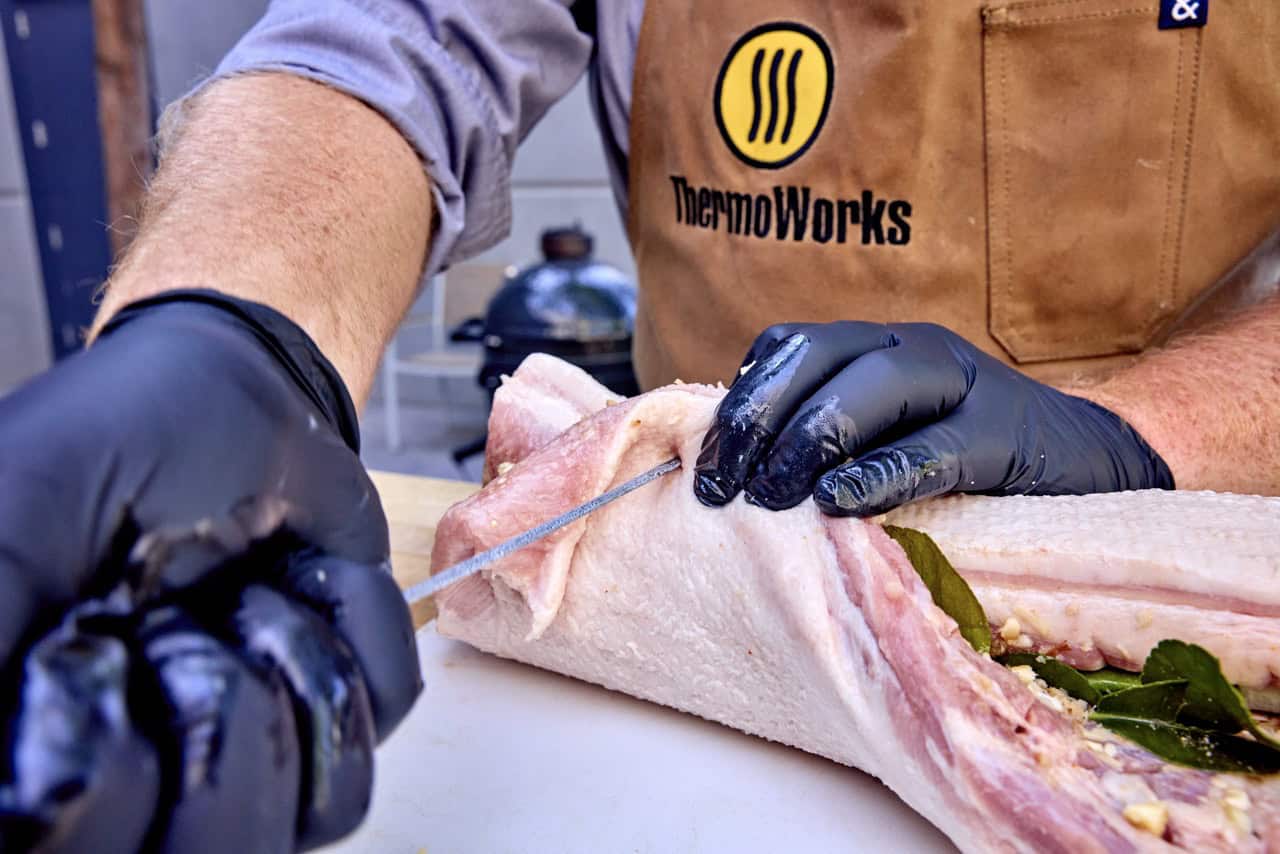
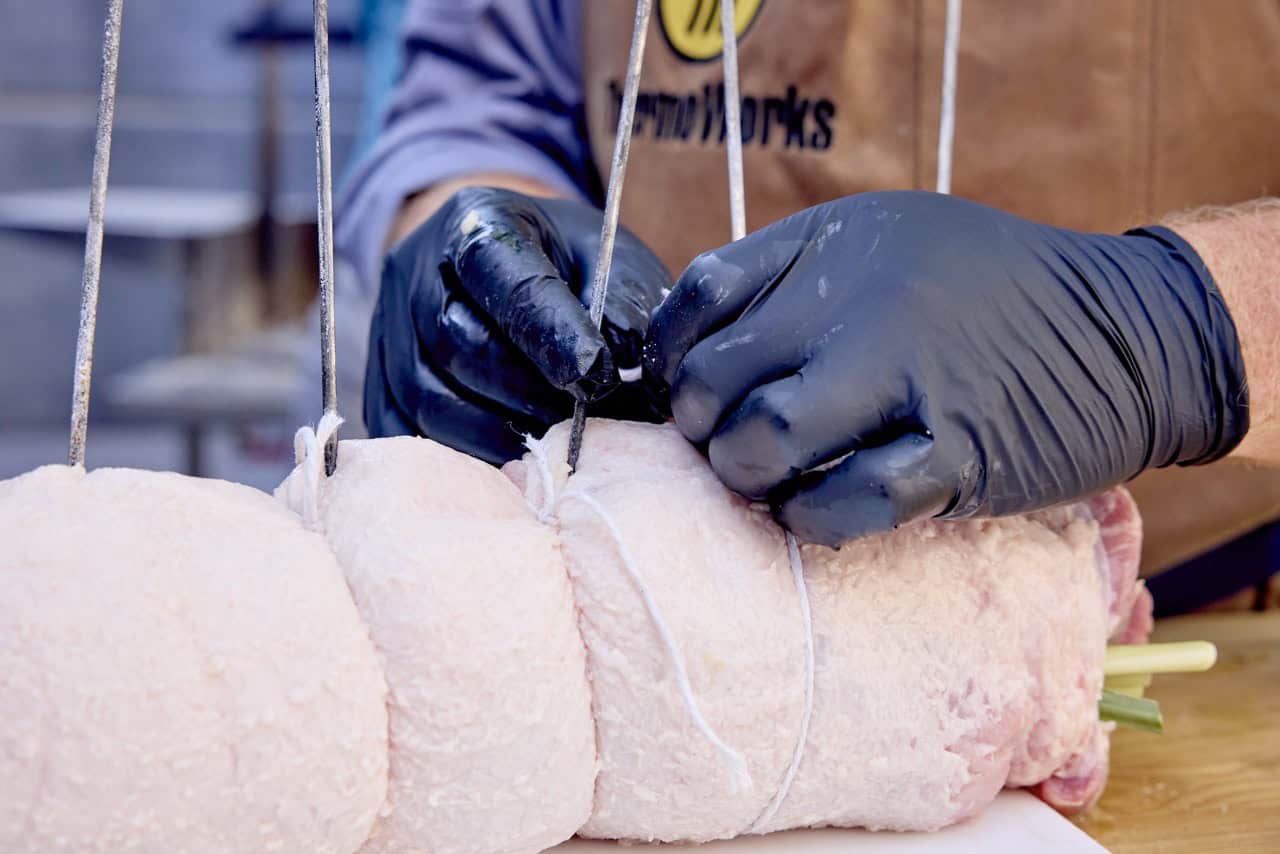
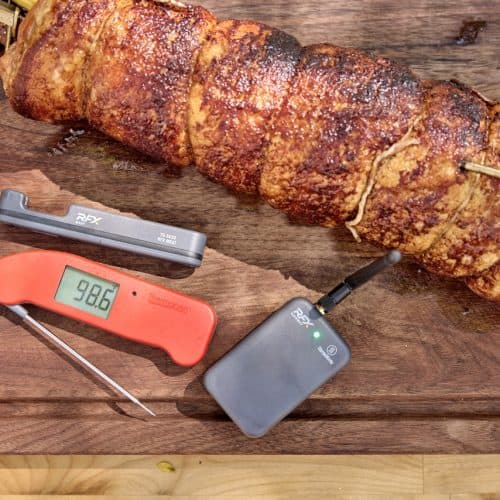
When you roll and tie the pork belly, wouldn’t some of it overlap and therefore not be basted? Or do you recommend trimming any over/under lapping parts off?
There’s very little overlap on a piece this thick. And we temp that part, too, when we check with Thermapen ONE.
So, yeah, no spit in my backyard but I wondered how you think this would do using a good rotisserie attachment in a gas grill?
Should work great!
You really really ought to make this recipe as a video.